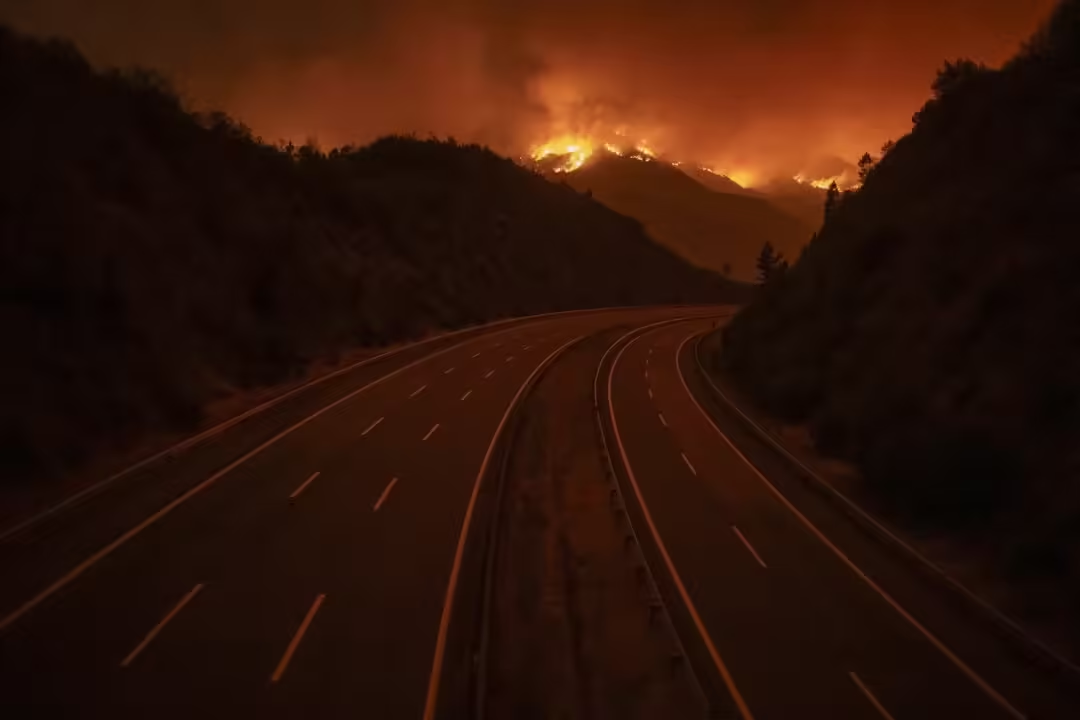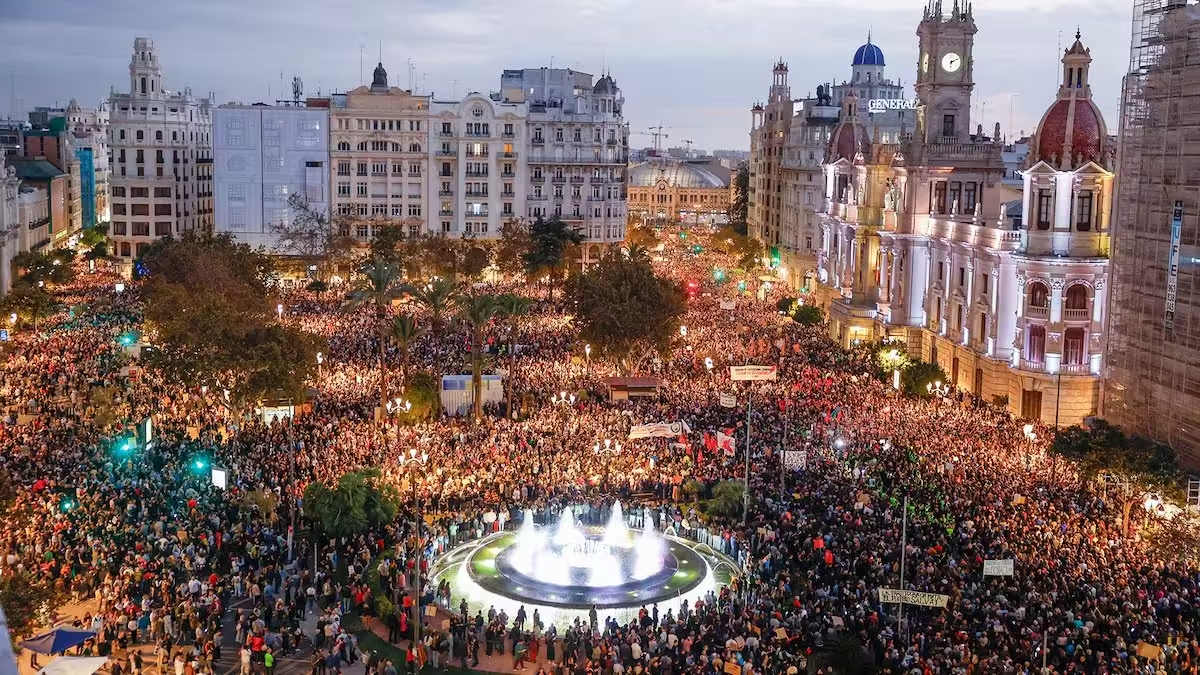Spain Wildfires: Latest Updates and Areas Affected
Extreme Heat Drives Rapid Fire Spread
Spain is facing one of its most severe wildfire seasons in years. A historic heatwave has pushed temperatures above 40°C (104°F) in many areas, with some locations reaching a staggering 46°C (115°F). These extreme conditions, combined with dry vegetation and strong winds, are causing fires to spread at alarming speeds. Authorities have issued warnings that the fire risk is “very high to extreme” across most of the country.
The heatwave isn’t limited to Spain. Portugal, Greece, and other southern European countries are also battling wildfires, stretching firefighting resources across the region. Meteorologists warn that these extreme summer conditions are likely to continue for several more days, increasing the risk of new outbreaks.
Fires Across Multiple Regions
Currently, 14 major wildfires are active, primarily in Galicia, Castilla y León, and Extremadura. So far, around 158,000 hectares of land have been scorched, nearly double the usual area burned at this time of year.
In Galicia, fires have merged, spreading into the neighboring province of Zamora. Hundreds of residents have been evacuated, and emergency shelters have been set up to house displaced families. Castilla y León has seen fast-moving fires threaten several towns, prompting urgent evacuation measures. Extremadura and Castilla-La Mancha are also on high alert, with multiple smaller fires being closely monitored.
One of the most intense fires in León has destroyed entire forests, with flames reaching heights of 20 meters. In some areas, the fire has been able to burn up to 4,000 hectares in a single hour, showing the extreme speed and danger posed by these blazes.
Esto, por desgracia, describe el lamentable estado del incendio hoy en Tierra de la Reina, en el Parque Regional de la Montaña de Riaño y Mampodre 🤦🔥
— Diario de Valderrueda (@DDValderrueda) August 15, 2025
Una tragedia medioambiental que está "reventando" algunos de los mejores valles de la Montaña Leonesa 😢#incendios #leonesp pic.twitter.com/nsj15gZI8e
Human Toll and Safety Concerns
The human impact has been tragic. At least three people have died, including a volunteer firefighter in León and two civilians caught in the fires. Several others, including emergency workers, have been injured. Authorities continue to urge residents in high-risk areas to evacuate immediately when advised.
Smoke from the fires is affecting air quality in nearby cities, posing health risks for vulnerable populations, including the elderly, children, and people with respiratory conditions.
Emergency Response and International Support
Spain has mobilized significant resources to tackle the fires. The Military Emergency Unit (UME) has deployed 1,300 troops directly combating fires and another 2,100 supporting operations. Firefighters are using water-bombing planes, helicopters, fire engines, and specialized vehicles to control the flames.
International assistance has also been requested, with firefighting planes arriving from France, Italy, and Germany. In addition, local authorities are enforcing fire bans in high-risk areas, including restrictions on campfires, barbecues, and all outdoor burning, until at least August 19.
🚨 Un incendio en Dozón corta la autovía entre Lalín y Ourense
— La Región (@LaRegion) August 12, 2025
Un grave incendio ha provocado el cierre completo de la autovía AG-53, una vía clave que conecta Santiago con Ourense ↘ https://t.co/Ein6ZxobJg pic.twitter.com/vBtjyyMIYa
Travel Disruptions and Community Impact
Wildfires are not only threatening lives and property, they are also disrupting daily life. Major roads, such as the A‑52 motorway in Ourense, have been closed due to the flames. The Madrid–Galicia high-speed rail line has been temporarily suspended near active fire zones. Schools and local services are being adjusted to ensure public safety. Communities are coming together to support evacuation efforts, with volunteers helping at shelters and providing essential aid.
Climate Change and the Future of Wildfires in Spain
Experts warn that events like this may become more frequent as Europe experiences hotter and drier summers due to climate change. Spain’s current crisis highlights the growing vulnerability of southern European regions to extreme weather events and underscores the urgent need for improved fire prevention, forest management, and climate adaptation measures.
Authorities are calling on the public to remain vigilant, follow official guidance, and report any new fires immediately. The ongoing efforts demonstrate the scale of the challenge, with thousands of personnel working tirelessly to protect communities and natural landscapes.
Staying Safe and Preventing Wildfires
Wildfires can start easily, often from small sparks or human activity, so everyone needs to be careful—especially during hot, dry weather. Here are some important steps people can take to help prevent fires and stay safe:
- Avoid Open Flames: Do not light fires, barbeques, or fireworks in or near forested areas. Even a small spark can start a wildfire.
- Dispose of Cigarettes Properly: Make sure cigarettes are fully extinguished before throwing them away. Avoid discarding them in dry grass or wooded areas.
- Follow Local Restrictions: Pay attention to fire bans or warnings issued by local authorities. These rules are in place to reduce the risk of wildfires.
- Drive Carefully: Hot car engines and exhausts can ignite dry grass along roadsides. Avoid parking on dry vegetation.
- Clear Surroundings: If you live near forested areas, keep your garden and property free from dry leaves, brush, and flammable materials.
- Report Fires Quickly: If you spot smoke or fire, call emergency services immediately. Early reporting helps firefighters respond faster and contain the blaze.
By staying vigilant and following these precautions, residents and visitors can help reduce the risk of wildfires and protect both lives and nature.
Share this content:




2 comments